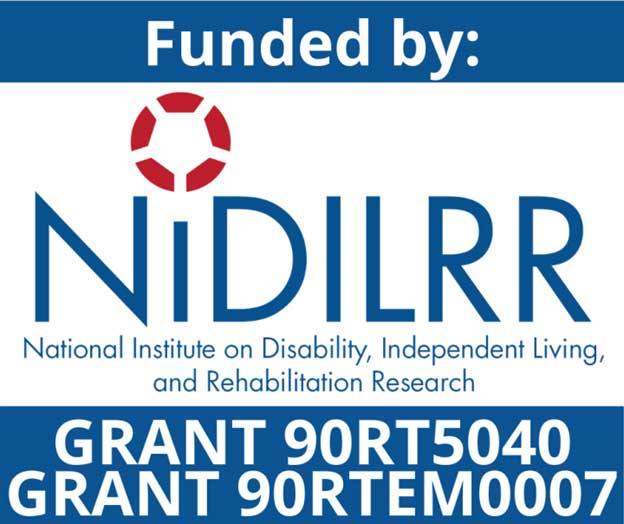How much do employers know about how blind people perform specific job tasks?
In 2013, we conducted a survey with 160 businesses that included questions about how legally blind people can perform five specific job tasks. The respondents, who were all in hiring positions, were from randomly selected businesses across four states. They were asked if they knew how legally blind people could perform certain job tasks, and if so, to describe how. We rated the accuracy of their “how” responses. We found that most employers do not know much about how blind people perform work-related tasks. Although some employers thought they knew the correct answers, few actually did.
Can you correctly describe how blind people perform the following tasks?
1. Access pre-printed material, such as a document already in regular print
[7.2% of employers answered correctly]
Low vision adaptations include using a photocopier to enlarge the print, low vision aids like a magnifying glass or special glasses, or a closed circuit television. Someone with no sight can use a special piece of equipment or software that scans documents, allowing the computer to read the text aloud or send it to a refreshable braille display. They can also take a picture using a camera on an iDevice and use special apps like KNFB-Reader to have it read aloud.
2. Access a computer to use the internet or email, or utilize standard computer software
[11.4% of employers answered correctly]
Low vision options include getting a larger computer monitor or to use software like ZoomText or Magic to enhance the size of what appears onscreen. Persons who have little or no usable vision would use a screen reader software package, which reads the words on the screen aloud. These include JAWS, System Access, Window-Eyes, or NVDA. Some persons may prefer to use a refreshable braille display in addition to the screen reader. This allows for more detailed editing and proofreading. In addition, the use of a refreshable braille display makes a computer accessible to someone who is both deaf and blind.
3. Use general office equipment, such as a copier or multi-line telephone system
[9.6% of employers answered correctly]
Persons with low vision can use a magnifying glass or a portable closed circuit television. Non-visual ways to access these devices include memorizing buttons and locations, using bump dots or other added tactile markings, and light probes. The most efficient way to utilize office equipment is to memorize buttons and controls, so one doesn’t have to look at the buttons each time. Some office devices offer large print settings for their displays, and a few have started to offer speech command options. In general, devices with physical buttons are more accessible than those with touch screens. When possible, choose devices with high contrast buttons that are not flush to the surface. Some copier brands, such as Lexmark and Cannon, offer a computer interface which provides more accessibility options for people who are blind.
4. Utilize standard industrial equipment or machinery (like sewing machines or production equipment)
[4% of employers answered correctly]
Low vision adaptations include task lighting, use of contrast, and use of low vision aids like magnifiers or portable closed circuit televisions. Non-visual adaptations include tactile markings such as bump dots or guides to indicate alignment or spacing. These do not have to be high-tech; they can be as simple as taping a piece of cardboard to the work surface for guidance.
5. Handle a cashier position (including taking money, making change, and managing a cash register)
[2.7% of employers answered correctly]
People with low vision could use a tool like a task lamp, or they could employ various techniques, such as turning bills upside down to see the larger print on the back or storing the cash drawer in a viewable position. The most common non-visual technique for cashiers is the use of a talking device to identify bills. There are even apps for cell phones that serve this purpose! Coins can be identified by touch, and some people use different folding techniques to differentiate bill denominations. The keys of the cash register can be memorized, and talking cash registers for people who are blind are available. Mental math or a talking calculator can be used to make change if a talking cash register is not available. Some accessible apps provide point of sale functions for iDevices.
Remember, blind people can perform all of these specific job tasks with the right accommodations. If there is a task at your job that you are not sure how a blind person could perform, don’t be afraid to ask them in the interview! They can walk you through the techniques they would use in order to complete the task.
